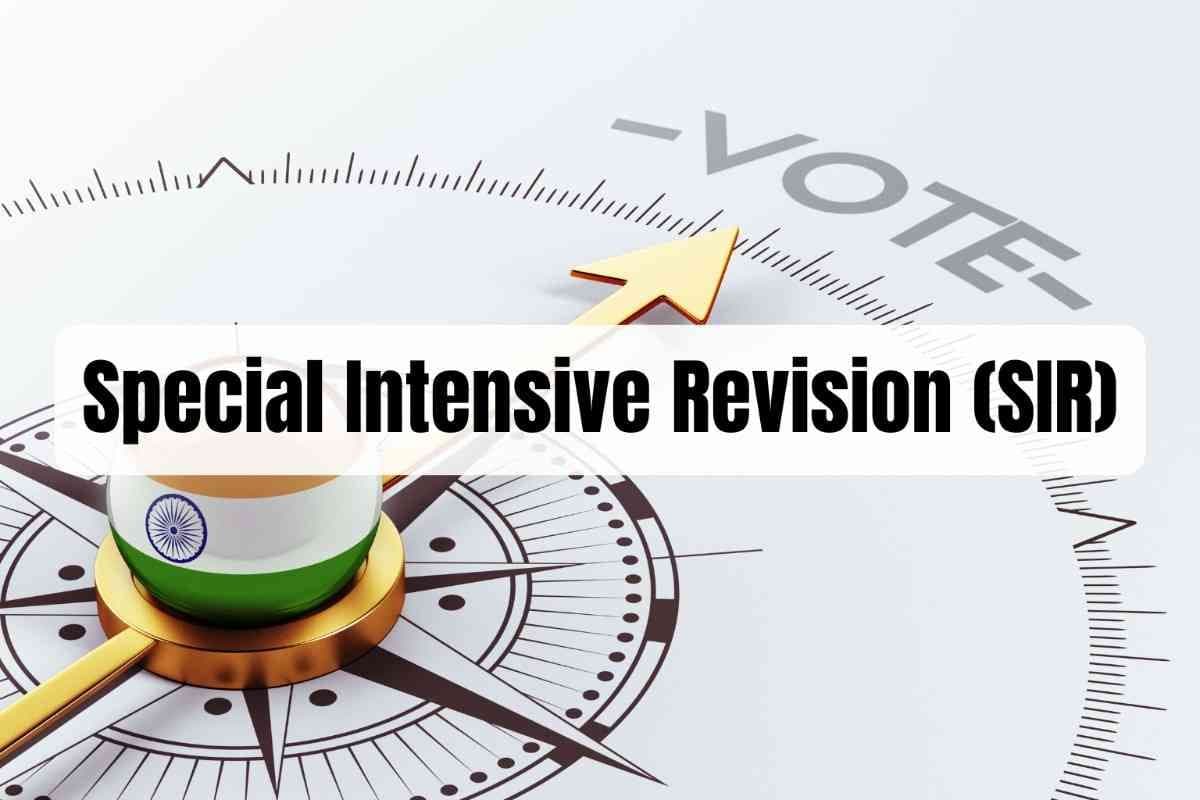India’s Road to Universal Health Coverage
Jun, 2025
•4 min read
Introduction
Universal Health Coverage (UHC) is not merely a health goal — it is a measure of a nation’s commitment to inclusive development and social justice. For a country like India, with its vast demographic, geographic, and socioeconomic diversity, achieving UHC is both a moral imperative and a pragmatic necessity. It holds the key to improved quality of life, economic productivity, and sustainable human development.
This blog explores India’s journey toward UHC — the vision, current landscape, challenges, reforms, global lessons, and the way forward for building an equitable and resilient health system.
The Concept of Universal Health Coverage
- India’s path to UHC is built around three core goals — expanding population coverage, ensuring a comprehensive service package, and offering strong financial protection. However, wide gaps exist across these dimensions, especially for the poor, rural populations, and informal sector workers.
- According to WHO, India still lags on UHC service coverage index, scoring 61 out of 100 (2021), compared to 83 in Sri Lanka and 81 in China. Service gaps are stark in mental health, NCD care, and palliative services.
- UHC also intersects with broader development goals — better health outcomes directly enhance school attendance, workforce productivity, and poverty alleviation. The 2017 National Health Policy rightly positioned UHC as the cornerstone of India’s public health vision.
India’s Healthcare Landscape: Current Status and Gaps
Public and Private Health Systems
- India has a pluralistic healthcare system — a relatively under-resourced public sector coexists with a rapidly expanding private sector. While 70% of outpatient and 55% of inpatient care is delivered by private providers, only a fraction of it is affordable or regulated.
- Government facilities, especially in rural areas, face chronic shortages of infrastructure, staff, diagnostics, and medicines. The 2021 Rural Health Statistics report highlighted a 67% shortfall in specialists at Community Health Centres (CHCs).
Health Financing Patterns
- India’s total health expenditure remains around 2.96% of GDP, of which the government contributes only ~1.35% (Economic Survey 2023-24), far below the global average of ~6%. This underinvestment leads to catastrophic health spending for households.
- While schemes like PM-JAY have reduced the cost of hospitalization, a large share of OOP is driven by medications, outpatient care, and diagnostic tests, which remain outside insurance coverage.
Health Outcomes: A Mixed Picture
- Key indicators show improvement — Infant Mortality Rates(IMR) dropped to 27 per 1,000 live births and life expectancy reached 70.1 years. However, inter-state disparities persist: Kerala rivals developed countries, while Bihar and Uttar Pradesh still lag behind in institutional deliveries, immunization, and maternal care.
- The rising burden of Non Communicable Diseases now accounts for over 63% of deaths in India (WHO), demanding a shift in focus from episodic care to long-term chronic care systems.
Multiple Choice Questions
QUESTION 1
Medium
Which of the following statements regarding India’s healthcare system is/are correct?
- The private sector dominates both outpatient and inpatient care delivery.
- Public healthcare facilities in India are known for high quality and accountability across all states.
- Public healthcare infrastructure has extensive rural reach via the National Health Mission (NHM).
- Private healthcare costs are generally affordable for all sections of society.
Select an option to attempt
Milestones and Major Reforms in India’s UHC Journey
National Health Mission (NHM)
- Launched in 2005, NHM focused on maternal-child health, rural infrastructure, and community participation. The ASHA program — now comprising over 10 lakh workers — created a crucial last-mile health link.
- While NHM strengthened primary care in many states, it remained heavily skewed toward reproductive health and underfunded in urban and NCD domains.
Ayushman Bharat Programme (AB-PMJAY + HWCs)
- In 2018, the government launched Ayushman Bharat, a flagship twin-pillar strategy:
- Health & Wellness Centres (HWCs): Over 1.7 lakh HWCs have been operationalized, offering care for hypertension, diabetes, mental health, and basic diagnostics.
- PM-JAY: World’s largest health assurance scheme, covering over 50 crore people for ₹5 lakh per family per year. It has enabled 5.5 crore+ hospitalizations, many in tertiary care.
- However, limited empanelment of private hospitals, poor awareness in some states, and weak outpatient integration hinder its full potential.
National Digital Health Mission (NDHM)
- Launched in 2020, NDHM envisions a digital health ecosystem — with Health IDs, EHRs, teleconsultation, and interoperable health data.
- Early pilots have shown promise, but digital literacy, privacy norms, and interstate IT readiness remain concerns.
Challenges and Barriers on the Road to UHC
Inadequate Public Health Spending
- At just ~1.35% of GDP, public health spending in India is among the world’s lowest. This limits investments in primary care, human resources, and infrastructure, particularly in underserved regions.
- Without a substantial increase in public spending — toward the 2.5% target — India will struggle to deliver quality care to all, leaving the private sector to fill the gap at high cost.
Persistent Out-of-Pocket Expenditure
- PM-JAY excludes major drivers of household spending like OPD services, medicines, and transportation costs. According to NSSO 75th Round, over 85% of Indians finance outpatient care out-of-pocket, exposing them to financial vulnerability.
Health Workforce Gaps
- India has 1.2 doctors and 1.7 nurses per 1,000 population, below WHO norms. Rural and remote districts suffer from an even wider deficit, often relying on informal providers.
- Training, recruitment, and equitable deployment — especially of specialists — are urgent imperatives.
Quality of Care Concerns
- Quality of care remains highly variable, particularly in the private sector, which lacks uniform standards and effective regulation.
- Even in public facilities, issues such as shortages of essential medicines, overburdened staff, and poor infrastructure undermine patient experience and outcomes.
Governance and System Fragmentation
- The Indian health system remains highly fragmented, with weak coordination between primary, secondary, and tertiary care. Referral mechanisms are poorly developed, leading to inefficiencies and gaps in care continuity.
- Governance is further complicated by health being a state subject, resulting in wide inter-state variations in capacity, performance, and commitment to UHC.
Global Lessons and Best Practices
Thailand’s UHC Success
- Thailand achieved UHC in 2002 via the Universal Coverage Scheme (UCS) funded by general taxation. It invested in district hospitals, referral chains, and capitation-based payments for primary care, ensuring low cost and high coverage.
- India can replicate Thailand’s emphasis on public delivery, referral integrity, and family physicians to contain NCDs and reduce tertiary-level congestion.
United Kingdom – Strong Public Health System & Gatekeeping
- The UK's NHS uses tax-based financing to provide comprehensive, free-at-point-of-care services. Its success rests on general practitioners as gatekeepers, robust public financing, and centralized health planning.
- India could adopt a graded care model, where HWCs act as gatekeepers, reducing unnecessary tertiary admissions and controlling costs.
Brazil’s Family Health Strategy
- Brazil expanded primary healthcare by deploying family health teams that offer preventive, curative, and promotional services in catchment areas. This helped lower hospitalization rates and regional disparities.
- Similar community-focused teams in India, building on ASHA and ANM networks, can better address local health needs — especially NCDs and elderly care.
The Road Ahead: Policy Priorities for Achieving UHC
Increase Public Investment in Health
- Meeting the 2.5% of GDP target is essential. Resources must be directed toward:
- Primary healthcare strengthening.
- Human resource development.
- Infrastructure upgrades.
- NCD and mental health services.
Strengthen Primary Healthcare as the Foundation
- Universal Health Coverage must rest on a robust primary care system. Scaling up Health and Wellness Centres with adequate staffing, medicine availability, and diagnostics will reduce the burden on higher-level facilities.
- Community engagement and ASHA workforce support must remain central to this strategy.
Build a Strong and Equitable Health Workforce
- Expanding medical and nursing education, skill development, and ensuring equitable workforce distribution are critical to bridging existing gaps.
- Innovative models such as task-sharing, telemedicine, and public-private partnerships can complement these efforts.
Ensure Financial Protection and Reduce OOP
- PM-JAY must evolve to cover a wider range of services, including outpatient care and essential medicines.
- Provider payment reforms, fraud prevention, and improved claim settlement processes can enhance efficiency and trust.
Promote Governance and Quality Assurance
- Stronger regulation of private providers, clear clinical standards, and transparent accountability mechanisms are urgently needed.
- Building a culture of quality in both public and private sectors is critical to making UHC meaningful for citizens.
Address Social Determinants of Health
- UHC cannot be achieved in isolation. Nutrition, sanitation, clean air and water, gender equity, and education must be integrated into a multi-sectoral approach to health.
- Inter-sectoral coordination at national and state levels is vital.
Conclusion
- The vision of Universal Health Coverage is deeply aligned with India’s constitutional commitment to social justice and equity. It is not a distant dream but an attainable goal — provided we invest the necessary political will, public resources, and institutional reforms.
- India’s journey to UHC will be complex, but it also offers immense opportunity. By leveraging digital innovations, community participation, and global best practices, India can build a health system that truly serves all its people — rich and poor, rural and urban, young and old.
- The road ahead demands bold policy choices and sustained effort — but the destination, a healthier and more inclusive India, is well worth the journey.
Related Blogs

Special Intensive Revision (SIR) of Electoral Rolls: Definition, Objectives, Significance, & Challenges
Dec, 2025
•4 min read

UNICEF Day 2025: 79 Years of Global Commitment to Child Rights & Protection
Dec, 2025
•4 min read

Vande Mataram: The National Song of India UPSC | Recent Debate in the Parliament
Dec, 2025
•6 min read